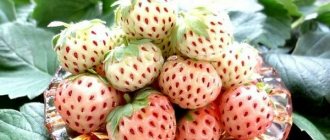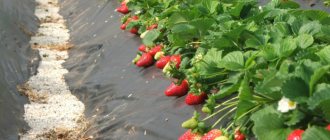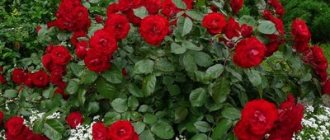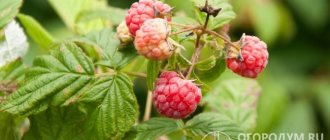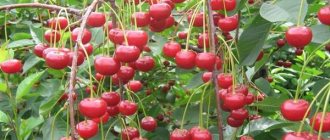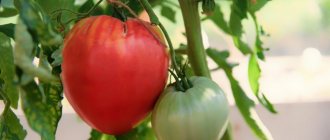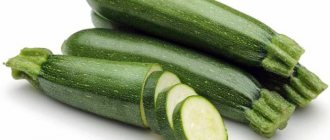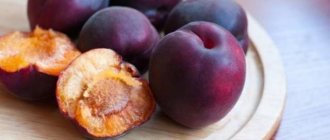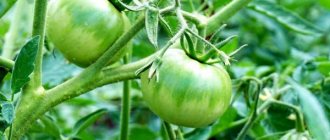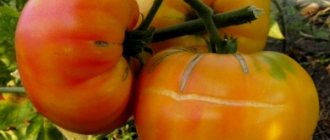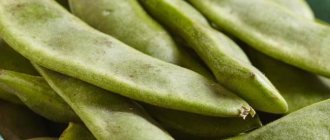Mitze Schindler is a late strawberry variety of German selection, obtained at the beginning of the 20th century (1930) as a result of crossing the Lucida Perfecta and Johann Müller (Müllerovka) varieties. Literally translated, the name of the variety sounds like “Schindler’s cat.” For its rich taste with characteristic raspberry notes, gardeners often call this assortment “raspberry”.
Varietal characteristics
The Mitze Schindler variety is characterized by low, spreading, weakly leafy bushes with a very large number of tendrils. The leaf blades are dark green, medium in size, with short petioles and a slightly ribbed, slightly shiny surface. The variety produces unisexual flowers without stamens, and therefore requires pollinators. The peduncles are thin, located above the level of the leaves, and do not lie on the ground.
The berries are small (5-12 g, only the first ones reach 20 g), round in shape, rich red in color, and when fully ripe they acquire a characteristic cherry hue. The seeds are small, strongly pressed into the surface of the fruit. The pulp is raspberry-colored, very juicy with a pleasant rich aroma.
Mitze Schindler strawberries are late varieties, so one of the late-ripening varieties, for example Malvina or Borovitskaya, should also be used as a pollinator.
The tasting rating of Mitze Schindler fruits is very high. The variety can be considered a kind of standard in terms of taste characteristics. Berries are universally used, great for fresh consumption or processing. The average yield per hectare does not exceed 40-50 centners.
Description of the garden strawberry variety Mitze Schindler
Garden strawberries for Eliana, like Mitza Schindler, allow you to grow low-growing bushes with a small number of leaves. They all grow with a downward slope. They are small in size and have a smooth outer surface. Presented in dark green. The inner surface of the leaf is ribbed.
In the photo – Mitze Schindler’s kdubnik:
The weight of one berry reaches 10-20 g. But this figure is achieved only during the first harvest. On average, the weight will be 5 g. The shape of the fruit is round and has a dark cherry color. The fruits have a glossy surface and a bright red color. It is also worth learning more about the weeding process for the Marmalade variety.
The pulp has a delicate taste and density. It's also incredibly smooth. From 1 m2 you can get 0.8 kg of fresh berries. The quality of the harvest can be considered one of the best among dessert varieties.
The strawberry variety Darselect and Mitze Schindler is characterized by rapid acclimatization to the soil and growing conditions. It exhibits increased resistance to drought and frost, and also has strong immunity to disease. In this way it resembles the Kimberly variety.
The video shows the sweetest strawberries:
Flowering is unisexual. For successful pollination, it is necessary to plant pollinating varieties near the bushes of Mitze Schindler, for which the best option for late fruiting would be to use the Korona variety. The variety is classified as remontant, as it bears fruit from June until autumn. But what the Kupchikha variety is, and what features of its cultivation exist, read at this link.
Landing
The best time for planting strawberries is spring, from April to May, as well as the second half of summer. Under favorable conditions, complete rooting takes about 3 weeks. In the year of planting (if it was done in the spring), fruiting will be partial. A full harvest will be harvested only next season.
For planting strawberries, choose flat, well-lit areas with light, fertile soils. Waterlogged, swampy and clayey soils are not suitable for cultivation.
Most often, strawberries are planted in a single row with a distance between rows of at least 60 cm. An interval of about 20 cm is maintained between plants. More dense planting leads to thickening and lower yields.
How and when to plant
Before planting a plant, it is necessary to carefully inspect the planting material. The bushes must be completely healthy. They should not contain dried roots or leaves affected by diseases. Before planting, it is worth treating the bushes with a solution of Fitosporin.
Garden strawberries of this variety bear fruit well and grow only in a well-lit area. At the same time, make sure that the soil is not too wet.
It should be fertile, breathable and light. Planting work must be done in autumn or spring. It is preferable to do this in the fall, since over the winter the bushes will be able to get stronger and grow a little. When planting, you need to adhere to the standard scheme of 50x20 or 60x15 cm. With this scheme of planting, you can get the maximum yield from every 1 m2.
The video shows planting strawberry seedlings:
It is worth planting bushes in the evening or when the weather is cloudy outside. The depth of the hole must fully correspond to the size of the roots. When planting, it is worth adding humus combined with wood ash to the hole. After planting, water the bushes generously, using warm water and an added stimulant for better rooting and growth. You also need to take care of laying mulch around the bushes. Straw or sawdust is best for this.
But this information will help you understand what the Malvina variety looks like in the photo.
This video will help you understand what the remontant Tsaritsa variety looks like and how big its fruits are.
Caring for strawberries in spring
Spring care for strawberries is very important. Immediately after the snow melts, the strawberry beds are cleared of the remnants of last year's leaves. Collected plant residues must be destroyed. In most cases, they become breeding grounds for pests and diseases.
After cleaning the plantations, preventive spraying with fungicides is carried out. You can use Bordeaux mixture or other copper-containing products. For those who prefer organic farming, biological products are recommended: Fitosporin or Phytocid. 10 days after treatment with fungicides, spraying with insecticides is carried out: Aktara, Alatar, Komandor. They effectively destroy aphids, thrips, and weevils.
At the moment of leaf growth, strawberries need a large amount of nitrogen fertilizers. Their application can be carried out by scattering over the soil surface or through irrigation. For irrigation, ammonium nitrate is used, in a dosage of 1 matchbox per bucket of water. Urea is introduced by spreading followed by embedding; its consumption is about 20 g per square meter. Humus can be used as an organic fertilizer. They mulch the soil surface under the bushes. Humus consumption – 1 bucket per m2. The lack of fluorine and potassium can be compensated for with ordinary wood ash and without the use of mineral fertilizers. Ash consumption: 1 glass per m2.
The Mitze Schindler variety is very demanding on timely watering, as well as planting only in sunny areas.
Features of agricultural cultivation technology
Growing and caring for Mitse Nova strawberries is, by and large, not much different from the agricultural techniques used in growing the crop as a whole.
- Considering the compactness of the bush, thickened planting is possible - up to 10 seedlings per 1 m2. On average, the recommended planting density is 3-5 seedlings per m2.
- It is better to plant in autumn in soil well fertilized with organic matter.
- With heavy evening dew, in a humid climate, the immune system cannot cope with a fungal infection - spotting is possible. For prevention, fungicide treatment of the Quadris type is used - before flowering, to invest while waiting and after harvesting - the queen cells will be clean, as will the young seedlings. Or you can use home remedies - two or three times treatment with a weak iodine solution.
- When propagating, it is better to take seedlings no further than the second or third outlet.
Productivity, as always, however, will correspond to the declared one only with a high level of agricultural technology. Taking into account the higher level of agricultural practices used on experimental farms and, let’s be objective, on farms and small garden plantings, they differ significantly.
If the so-called a drop for many today is a source of pride, like a homemade greenhouse, then special soils like the Finnish one, agroponics, complex fertilizing, as well as cultivation in closed ground are everyday life in Germany.
Therefore, in order to get the maximum yield, organize drip irrigation, for early - a shelter or a greenhouse, complex mineral fertilizing is required during ovary and ripening, when planting - focus on nitrogen and organic matter.
As for opinions, the Mitse Nova strawberry received mostly positive reviews. Despite the possible reaction of collectors of new products who are accustomed to such sensations, apparently, the unique taste qualities and high yields are all true.
Flaws in the form of spotting are a problem for all varieties; none are 100% resistant, and Mitsa is not particularly painful. For your garden this will be a real decoration, for industrial cultivation - plant the seedlings on an experimental plantation, check how it behaves in your region, how good it is in your particular case. Have a generous harvest!
Summer care
The main care for strawberries in the summer consists of timely weeding and loosening. When loosening, you need to act carefully; the bulk of the roots are in the top layer of soil. To reduce the amount of weeding and watering, the surface of the soil under the bushes is mulched. Peat, humus or straw can be used as mulch. It must be taken into account that organic mulch binds soil nitrogen and returns it back gradually during overheating. To avoid slowing down the development of the plant, it is advisable to spill the mulch with a solution of mullein (1:10) or chicken droppings (1:20).
During the summer, strawberry bushes must be periodically cleared of dry leaves. Rotting plant debris very often provokes the development of gray rot, powdery mildew and a number of other diseases. Dry foliage also serves as an excellent refuge for pests.
The Mitze Schindler variety is characterized by increased plant formation. To prevent the fruit from shrinking and yield reduction, the mustaches that form during the summer must be removed in a timely manner. If this is neglected, the strawberry beds will very quickly turn into a solid green mass with a few small fruits.
During the summer, strawberries are fed 3-4 times. Fertilizers are applied for the first time after the snow melts. For this purpose, universal mineral complexes with a high nitrogen content are used. After 10 days, the strawberries are fed with organic matter. For example, you can use fermented nettle infusion. This weed can be found in almost any area. To prepare the infusion, nettles are chopped and tightly stuffed into large plastic bags, which are then left in the sun. As soon as the contents turn into a homogeneous liquid, the infusion is ready. Before use, it is diluted in a ratio of 1:10. The last time fertilizer is applied is at the end of summer.
Reproduction
Typically, a strawberry plantation is used for no more than 3-4 years. Then the yield indicators begin to gradually fall, and the berries themselves become smaller. To obtain planting material, pure uterine plots are left. The mustache that forms on them is not cut off. After rooting, they are transplanted to a new place.
In just one summer, from such a site you can get 2-3 generations of full-fledged, well-developed whiskers. Further use of this plantation is inappropriate, so it is being plowed up. Next year, green manure can be sown in this place to restore and improve the soil.
The most common diseases
If agricultural practices are not followed and as a result of exposure to unfavorable weather conditions, strawberries can be affected by a number of diseases. The most common of them are discussed in detail below.
Gray rot
It mainly affects berries. Spread is favored by prolonged rains. In some cases, it affects up to 90% of fruits. The main sign of the disease is a characteristic gray coating. To combat gray mold, fungicides are used: Horus, Strobi, Switch. Biological products: Fitosporin and Trichodermin are also highly effective. They can be used even during the fruiting period.
Leaf spot
Widespread fungal diseases. They can affect all parts of the plant, causing the leaves to dry out. As a result, weakened plants significantly reduce yields. The development of spots is promoted by high humidity, which occurs due to excessive watering or too dense planting. For processing, Bordeaux mixture, Skor, Fundazol and Ordan are used. Among biological products, Fitosporin and Pseudobacterin are effective.
Anthracnose
Affects mature and green fruits. High humidity promotes the development of the disease. Damage appears on the surface of the berries in the form of brown spots. With further progression, the pathogen infects leaves and stalks. To prevent anthracnose, strawberries during budding are treated with fungicides: Horus, Bordeaux mixture, Quadris.
